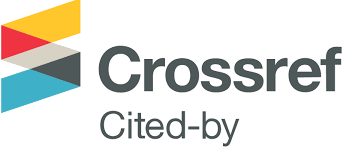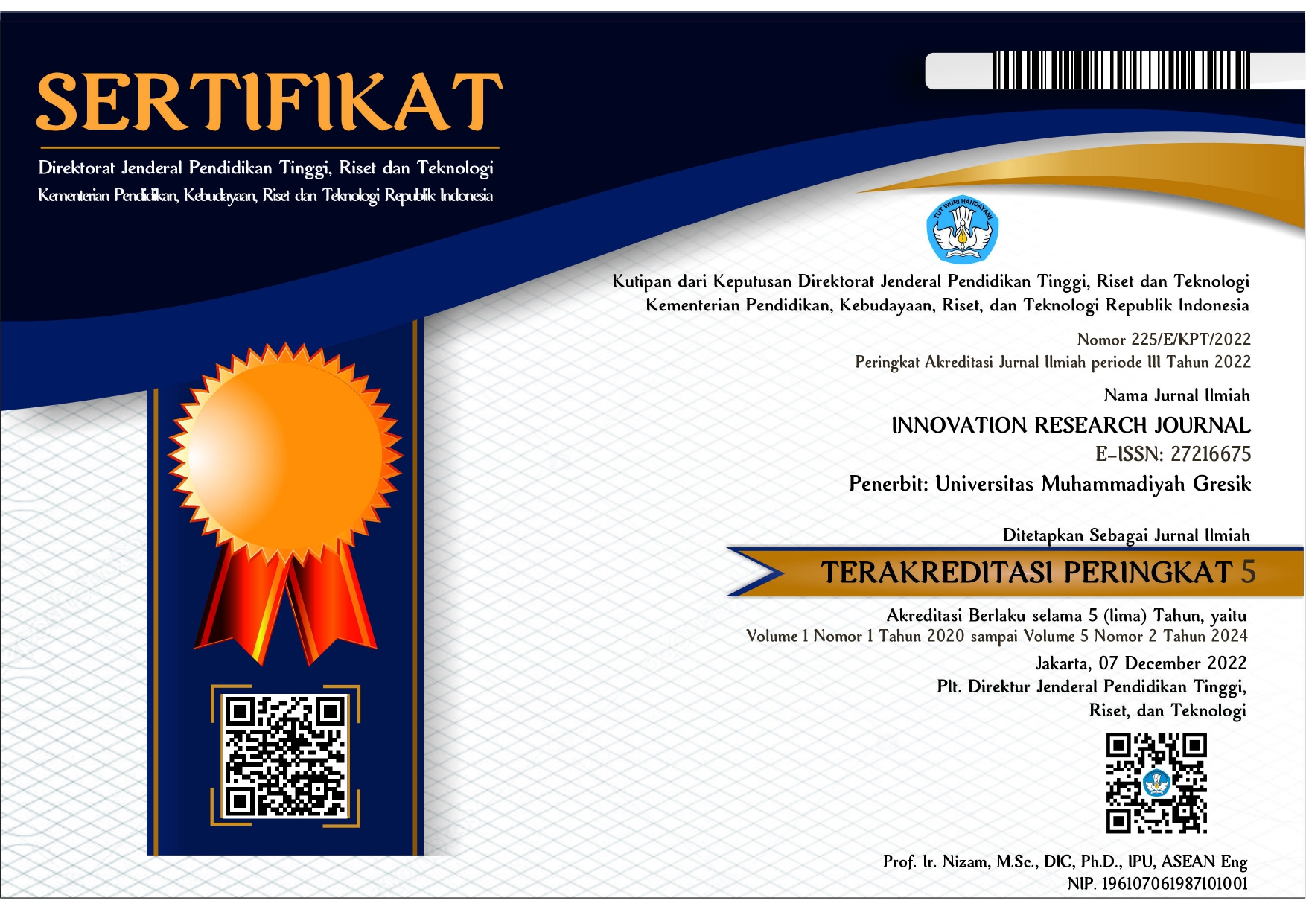The Role of Marketing Strategy to Increase Brand Trust in the "Pospay" at PT POS Indonesia Malang
DOI:
https://doi.org/10.30587/innovation.v4i2.6444Keywords:
Marketing Strategy, Brand TrustAbstract
Pospay application is growing quite rapidly both internally and externally, so it requires several marketing strategies so that it can influence Brand Trust from the Pospay Application. So, good integrated financial services are needed so that PT Pos Indonesia (Persero) can carry out transactions where previously one person could only carry out one transaction, but PT. Pos has carried out innovations that can provide benefits to society. In this case PT. Pos presents an application offered to consumers to facilitate transactions. Here the application is called POSPAY which aims to provide easy financial services to public which is fixed relevant with changing times in the digital era. The main goal is to shorten time by making several payments at just one time. This study uses a qualitative method, technique data collection using direct observation and interviews with Managers/Staff Financial Services. This observation was carried out in a flexible discussion. The subjects and place of this research are employees of PT Pos Indonesia (Persero) Regional 5 Malang. From the results of observations and interviews, the author can conclude that marketing strategies are able to increase public trust in PT. Pos Indonesia through the Pospay application, such as holding workshop events, sponsoring various events related to transactions, and collaborating with various products outside the company.
References
Arkandito, G. F., Maryani, E., Rahmawan, D., & Wirakusumah, T. K. (2019). Komunikasi Verbal Pada Anggota Keluarga Yang Memiliki Anak Indigo. Jurnal Manajemen Komunikasi, 1(1). https://doi.org/10.24198/jmk.v1i1.9955
Bastian, D. A., & Siwalankerto, J. (n.d., 2014). Analisis Pengaruh Citra Merek (Brand Image) dan Kepercayaan Merek (Brand Trust) Terhadap Loyalitas Merek (Brand Loyalty) ADES PT. Ades Alfindo Putra Setia.
Claessens, S. (2003). Benefits and Costs on Integrated Financial Services Provision in Developing Countries. Brookings-Wharton Papers on Financial Services, 2003(1), 85–139. https://doi.org/10.1353/pfs.2003.0002
Dalimunthe, M. H., & Aslami, N. (2021). Perencanaan dan Strategi Pemasaran Asuransi. VISA: Journal of Vision and Ideas, 1(1), 54–67. (n.d.).
Dewi, M. S., & Aslami, N. (2022). Analisis Strategi Marketing Terhadap Minat Konsumen Dalam Penggunaan Jasa Keuangan Pospay Pada Pt Pos Indonesia (Persero) Regional I Sumatera. Transekonomika: Akuntansi, Bisnis dan Keuangan, 2(4), 81–86. https://doi.org/10.55047/transekonomika.v2i4.148
Fadli, M. R. (2021). Memahami desain metode penelitian kualitatif. 21(1).
Felix, R., Rauschnabel, P. A., & Hinsch, C. (2017). Elements of strategic social media marketing: A holistic framework. Journal of Business Research, 70, 118–126. (n.d.).
Kotler, Philip & Amstrong, G. (2016). Principles of marketing (11 ed.). New York: Pearson International. (n.d.).
Madeline, S., & O. Sihombing, S. (2019). The Impacts Of Brand Experiences On Brand Love, Brand Trust, And Brand Loyalty: An Empirical Study. Jurnal Bisnis Dan Manajemen, 20(2), 91–107. https://doi.org/10.24198/jbm.v20i2.241
Mamahit, P., Soegoto, A. S., & Tumbuan, W. A. (2015). Pengaruh Brand Image, Brand Trust, Dan Kualitas Produk Terhadap Keputusan Pembelian Mobil Toyota All New Yaris Pada PT. Hasjrat Abadi Manado. 15(05).
Nurcahya, I. K. (n.d., 2015). Pengaruh Celebrity Endorser, Brand Image, Brand Trust Terhadap Keputusan Pembelian Clear Shampoo Di Kota Denpasar. 4(11).
Nurfitriani, A., & Suhartini, T. (2018). Strategi Marketing Public Relations Pt. Pos Indonesia. J-IKA, 5(1), 66–70. (n.d.).
Putra, T. W., & Keni, K. (2020). Brand Experience, Perceived Value, Brand Trust Untuk Memprediksi Brand Loyalty: Brand Love Sebagai Variabel Mediasi. Jurnal Muara Ilmu Ekonomi dan Bisnis, 4(1), 184. https://doi.org/10.24912/jmieb.v4i1.7759
Rizan, M. (2012). Pengaruh Brand Image Dan Brand Trust Terhadap Brand Loyalty Teh Botol Sosro. 3(1).
Romadhoni, A. P., & Surianto, Moh. A. (2022). Analisis Penerapan Strategi Attention, Interest, Desire dan Action pada Aplikasi Layanan Pospay. Jurnal Ekobistek, 315–322. https://doi.org/10.35134/ekobistek.v11i4.426
Saleh, H. M. Y., & Miah Said, S. E. (2019). Konsep dan Strategi Pemasaran: Marketing Concepts and Strategies (Vol. 1). Sah Media. (n.d.).
Santoso, R., Erstiawan, M. S., & Kusworo, A. Y. (2020). Inovasi Produk, Kreativitas Iklan Dan Brand Trust Mendorong Keputusan Pembelian. Jurnal Nusantara Aplikasi Manajemen Bisnis, 5(2), 133–145. https://doi.org/10.29407/nusamba.v5i2.14369
Sukardi, H. M. (2022) Metode penelitian pendidikan tindakan kelas: Implementasi dan pengembangannya. Bumi Aksara, 2022. (n.d.).
Wardhana, A. (2021). Brand Marketing The Art of Branding. Bandung: CV. Media Sans Indonesia. Researchgate< https://www. researchgate
Wulansari, A. (n.d., 2013 ). Pengaruh Brand Trust Dan Perceived Quality Terhadap Keputusan Pembelian Ulang Produk Sari Roti.
Adhari, I. Z. (2021). Kepuasan Pelanggan & Pencapaian Brand Trust. CV. Penerbit Qiara Media. https://books.google.co.id/books?id=Z5ZCEAAAQBAJ
Arkandito, G. F., Maryani, E., Rahmawan, D., & Wirakusumah, T. K. (2019). Komunikasi Verbal Pada Anggota Keluarga Yang Memiliki Anak Indigo. Jurnal Manajemen Komunikasi, 1(1). https://doi.org/10.24198/jmk.v1i1.9955
Bastian, D. A., & Siwalankerto, J. (n.d., 2014). Analisis Pengaruh Citra Merek (Brand Image) dan Kepercayaan Merek (Brand Trust) Terhadap Loyalitas Merek (Brand Loyalty) ADES PT. Ades Alfindo Putra Setia.
Claessens, S. (2003). Benefits and Costs on Integrated Financial Services Provision in Developing Countries. Brookings-Wharton Papers on Financial Services, 2003(1), 85–139. https://doi.org/10.1353/pfs.2003.0002
Dalimunthe, M. H., & Aslami, N. (2021). Perencanaan dan Strategi Pemasaran Asuransi. VISA: Journal of Vision and Ideas, 1(1), 54–67. (n.d.).
Dewi, M. S., & Aslami, N. (2022). Analisis Strategi Marketing Terhadap Minat Konsumen Dalam Penggunaan Jasa Keuangan Pospay Pada Pt Pos Indonesia (Persero) Regional I Sumatera. Transekonomika: Akuntansi, Bisnis dan Keuangan, 2(4), 81–86. https://doi.org/10.55047/transekonomika.v2i4.148
Fadli, M. R. (2021). Memahami desain metode penelitian kualitatif. 21(1).
Felix, R., Rauschnabel, P. A., & Hinsch, C. (2017). Elements of strategic social media marketing: A holistic framework. Journal of Business Research, 70, 118–126. (n.d.).
Kotler, Philip & Amstrong, G. (2016). Principles of marketing (11 ed.). New York: Pearson International. (n.d.).
Madeline, S., & O. Sihombing, S. (2019). The Impacts Of Brand Experiences On Brand Love, Brand Trust, And Brand Loyalty: An Empirical Study. Jurnal Bisnis Dan Manajemen, 20(2), 91–107. https://doi.org/10.24198/jbm.v20i2.241
Mamahit, P., Soegoto, A. S., & Tumbuan, W. A. (2015). Pengaruh Brand Image, Brand Trust, Dan Kualitas Produk Terhadap Keputusan Pembelian Mobil Toyota All New Yaris Pada PT. Hasjrat Abadi Manado. 15(05).
Nurcahya, I. K. (n.d., 2015). Pengaruh Celebrity Endorser, Brand Image, Brand Trust Terhadap Keputusan Pembelian Clear Shampoo Di Kota Denpasar. 4(11).
Nurfitriani, A., & Suhartini, T. (2018). Strategi Marketing Public Relations Pt. Pos Indonesia. J-IKA, 5(1), 66–70. (n.d.).
Putra, T. W., & Keni, K. (2020). Brand Experience, Perceived Value, Brand Trust Untuk Memprediksi Brand Loyalty: Brand Love Sebagai Variabel Mediasi. Jurnal Muara Ilmu Ekonomi dan Bisnis, 4(1), 184. https://doi.org/10.24912/jmieb.v4i1.7759
Rizan, M. (2012). Pengaruh Brand Image Dan Brand Trust Terhadap Brand Loyalty Teh Botol Sosro. 3(1).
Romadhoni, A. P., & Surianto, Moh. A. (2022). Analisis Penerapan Strategi Attention, Interest, Desire dan Action pada Aplikasi Layanan Pospay. Jurnal Ekobistek, 315–322. https://doi.org/10.35134/ekobistek.v11i4.426
Saleh, H. M. Y., & Miah Said, S. E. (2019). Konsep dan Strategi Pemasaran: Marketing Concepts and Strategies (Vol. 1). Sah Media. (n.d.).
Santoso, R., Erstiawan, M. S., & Kusworo, A. Y. (2020). Inovasi Produk, Kreativitas Iklan Dan Brand Trust Mendorong Keputusan Pembelian. Jurnal Nusantara Aplikasi Manajemen Bisnis, 5(2), 133–145. https://doi.org/10.29407/nusamba.v5i2.14369
Sukardi, H. M. (2022) Metode penelitian pendidikan tindakan kelas: Implementasi dan pengembangannya. Bumi Aksara, 2022. (n.d.).
Wardhana, A. (2021). Brand Marketing The Art of Branding. Bandung: CV. Media Sans Indonesia. Researchgate< https://www. researchgate
Wulansari, A. (n.d., 2013 ). Pengaruh Brand Trust Dan Perceived Quality Terhadap Keputusan Pembelian Ulang Produk Sari Roti.









